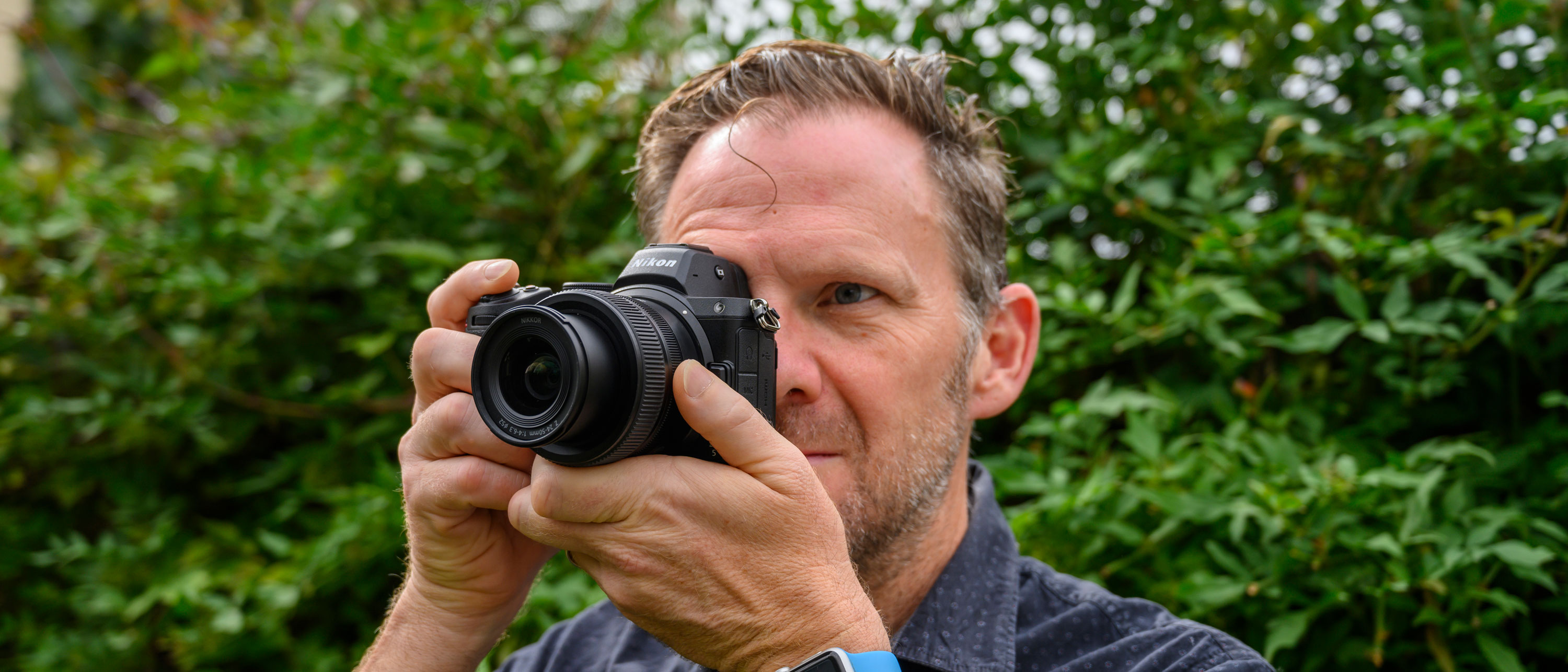Digital Camera World Verdict
The Z5 is a very good entry-level full frame camera, but its relatively high launch price may just persuade some potential purchasers that it’s worth forking out the relatively little extra for the Z6. Compared to other brands, the Z5 is neither cheap nor expensive. The Canon EOS RP is much cheaper to buy, but lacks the Z5's 4K video, while the Sony A7 III and Panasonic S1 are somewhat more advanced cameras and not exactly direct rivals. The Z5 is competent, attractive and affordable, but its price pitches it against a host of cameras which can boast exactly the same thing.
Pros
- +
Solid, robust feeling build
- +
Good EVF and tilting rear screen
- +
Twin memory card slots
Cons
- -
Only 4.5fps continuous shooting
- -
4K video is cropped
- -
24-50mm kit lens is limiting
- -
Nikon Z6 is better value
Why you can trust Digital Camera World
For what’s supposed to be an ‘entry level’ full-frame mirrorless camera, the Nikon Z5 is surprisingly well specced. It's fully weather sealed, featuring five-stop in-body image stabilization, a 24.3Mp sensor that goes up to ISO51,200 in native settings, and a class-leading electronic viewfinder. It seemingly matches the more upmarket Nikon Z6 feature for feature in all the important places.
Indeed, the control layout is almost exactly the same, offering a near identical handling experience, with a thumbstick, D-Pad and array of buttons to access vital controls at the back along with a touchscreen rear LCD, finger- and thumb-operated control dials in easy reach, and pair of well-positioned programmable Function buttons on the front.
For those making the move from a DSLR, though, the lack of direct access buttons can take some getting used to. While Nikon DSLRs typically allow you to change between single, continuous and self-timer shooting modes by turning a dial, or between AF-S, AF-C and Manual focus with a dedicated button, here you’ll need to select these options from on-screen menus. Likewise, there are no dedicated buttons for oft-used functions like metering, white balance or selecting between raw and JPEG image quality.
See also: best lenses for Nikon Z5
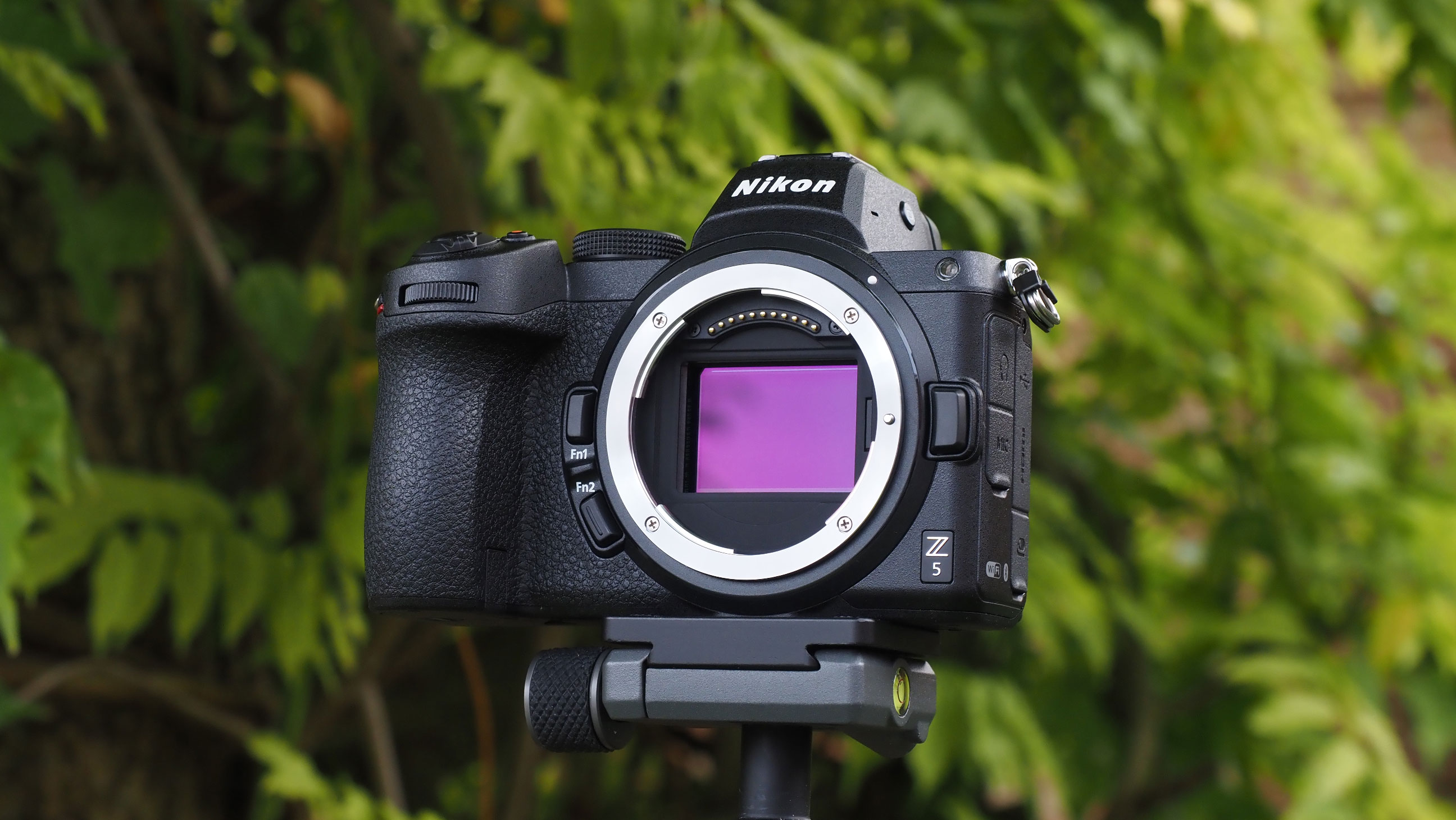
But things aren’t quite the same as on the Nikon Z6 and Z7. There’s no top-plate display to give at-a-glance info on all the vital settings. Instead, the exposure mode dial has been shifted over into its place, and while this has the same Auto, P, A, S, M modes plus three user-definable presets, it’s no longer of the locking variety, meaning that modes can be changed without having to first press down a central button. A small omission perhaps, but this was useful for preventing the accidental changing of exposure mode, and a sign that this lower-cost camera has made savings in less important areas while still keeping the overall functionality and quality up.
• Read more: Nikon Z5 vs Nikon Z6: what are the key differences?
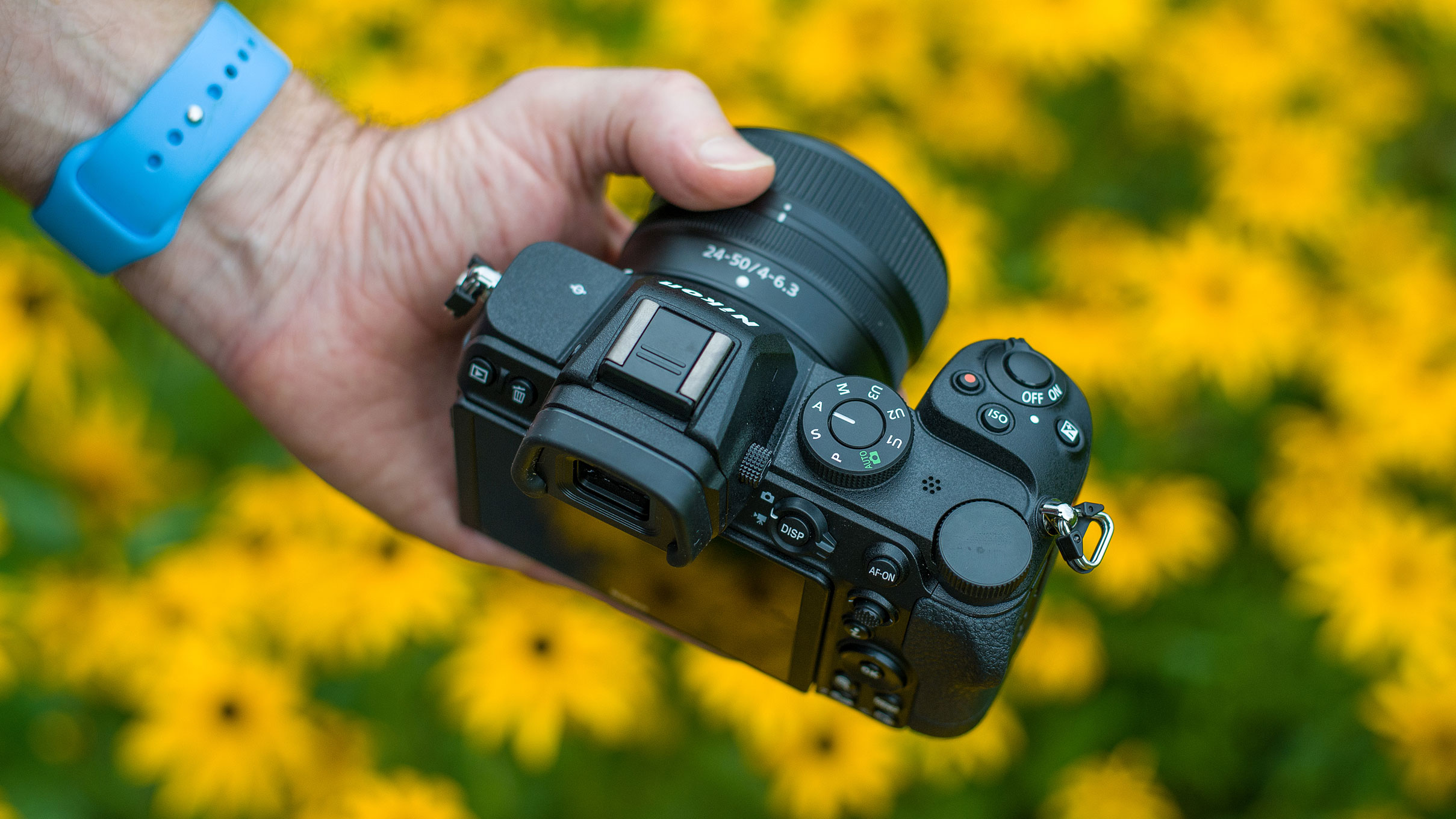
Specifications
Sensor: 24.3MP full frame CMOS sensor
Image processor: EXPEED 6
AF points: 273-point hybrid phase/contrast AF
ISO range: 100-52,200, exp 50-102,400
Metering modes: Matrix, center-weighted, spot, highlight-weighted
Video: 4K UHD, 30/25/24p
Viewfinder: EVF, 3,690k dots, 100% coverage, 0.8x magnification
Memory card: 2x SD/SDHC/SDXC, UHS-II
LCD: 3.2-inch tilting touchscreen, 1,040k dots
Max burst: 4.5fps
Connectivity: Wi-Fi, Bluetooth
Size: 134 x 100.5 x 69.5mm
Weight: 675g (body only, including battery and memory card)
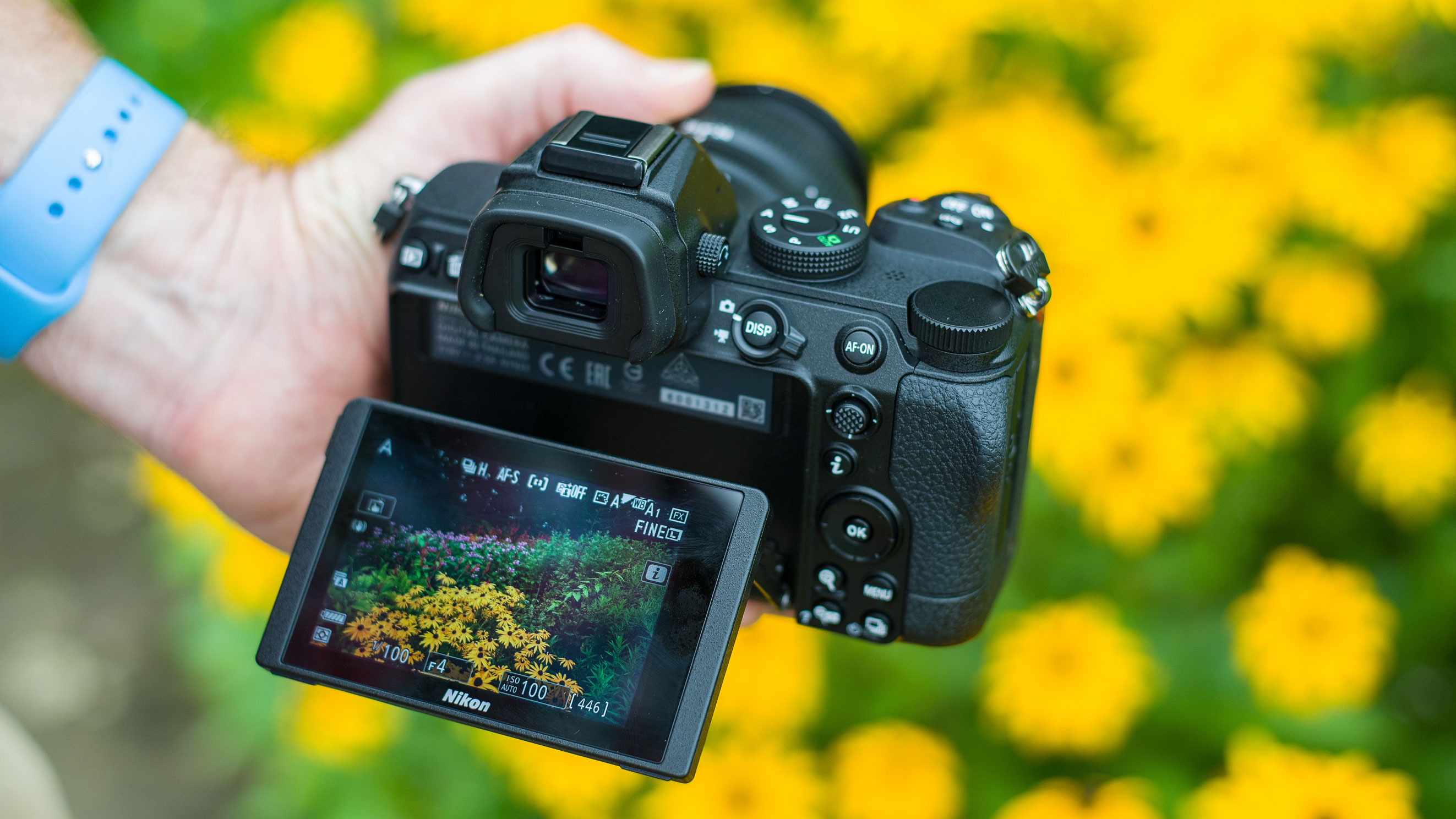
Key features
While its 24.3MP sensor is practically the same size as The Z6’s 24.5MP component, it’s not exactly the same. The 0.2MP difference translates to a 6016 x 4016 resolution on the Z 5 versus a 6048 x 4024 pixel-count on the Z6. This handful of pixels is certainly not enough to lose any sleep over, and images from either can be printed to the same resolution or cropped to the same degree without any noticeable difference – but it does indicate some differences in the sensor
The Z6 has a more expensive BSI (back-side illuminated) sensor while the Z5’s is based on more established (and therefore cheaper) CMOS technology. The chief distinction here is that BSI sensors put all the wiring at the back, while with CMOS this is at the front, sitting between the individual photodiodes, and potentially blocking some light from reaching them. In a nutshell, BSI sensors have better low-light performance. That said, both cameras have an ISO range of ISO100-51,200, but the Z6’s expanded range goes one stop better, topping out at ISO204,800 rather than ISO102,400.
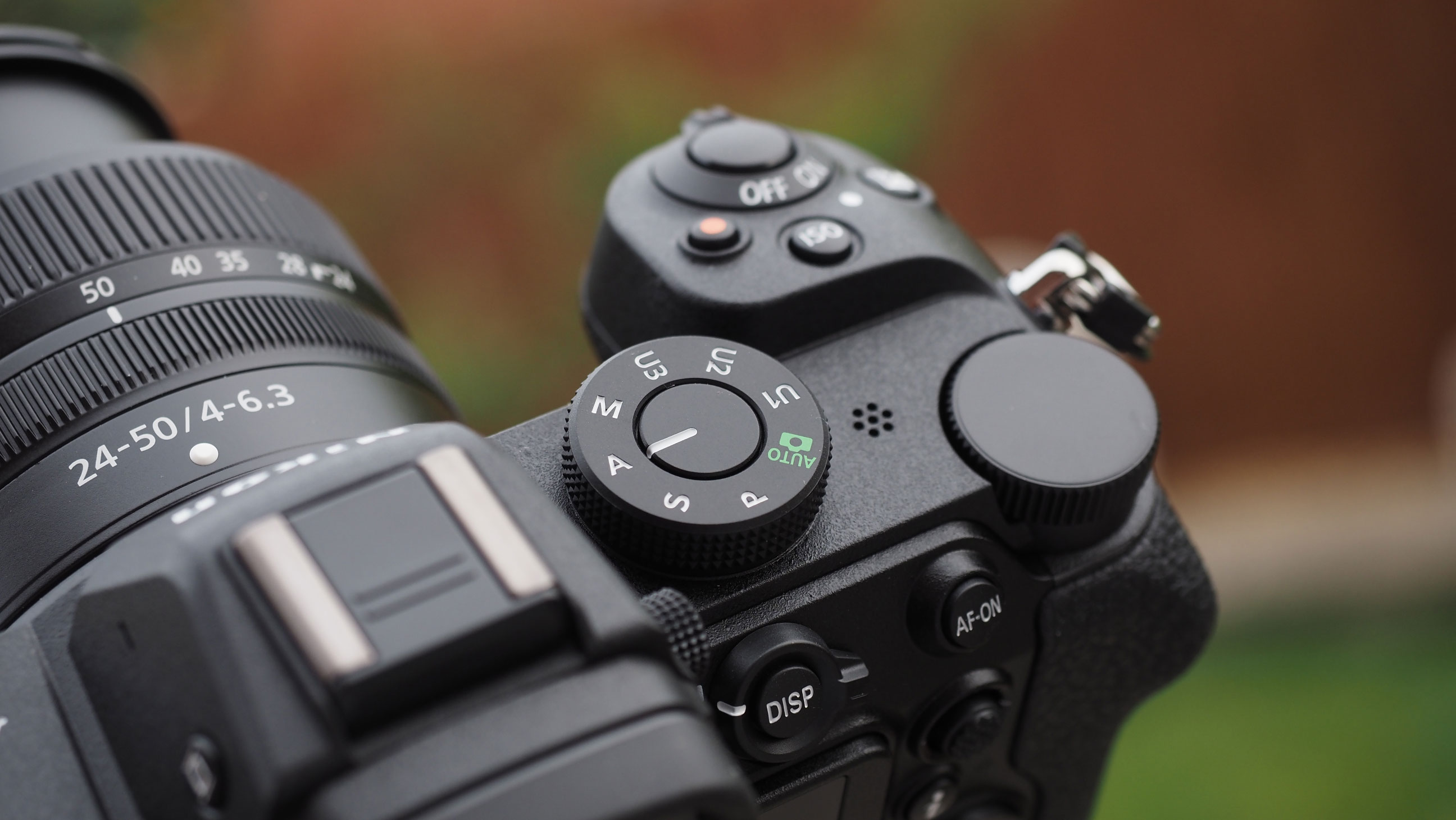
Another physical difference is that the door that houses the memory card slots is deeper; this is due to the Z 5 housing two memory card slots, rather than the single slot of the cameras higher up the range. This initially might seem like this gives the Z 5 the upper hand, especially to those concerned about the potential for card failure, but there are important considerations to take into account.
When Nikon adopted the XQD memory card format for the Z6 and Z7 (and has since enabled compatibility with the even more superior CFexpress), it reasoned that this was due to it being the fastest, most reliable and future-proof format available. But this came at a price, with the proprietary Sony-owned format being eye-wateringly expensive compared to same-capacity SD cards. Even the fastest UHS-II SD cards are left in the dust compared to the read/write speeds of XQD/CFexpress, and while we’ve certainly had SD cards corrupt on us, XQD/CFexpress cards are often quoted as having a failure rate that’s “close to zero”.
In addition to backing up your images on the fly, the Z5’s dual-card design also gives the option of recording raw files to one card and JPEGs to the other – useful for quickly sharing images from one card while having the full-fat files for those you might wish to work on more extensively on the other – or simply increasing the number of shots you can take without physically changing cards. The Z5 is actually a tad heavier (five grams) and 2mm deeper than the Z6 and Z7, no doubt as a result of accommodating the additional card slot.
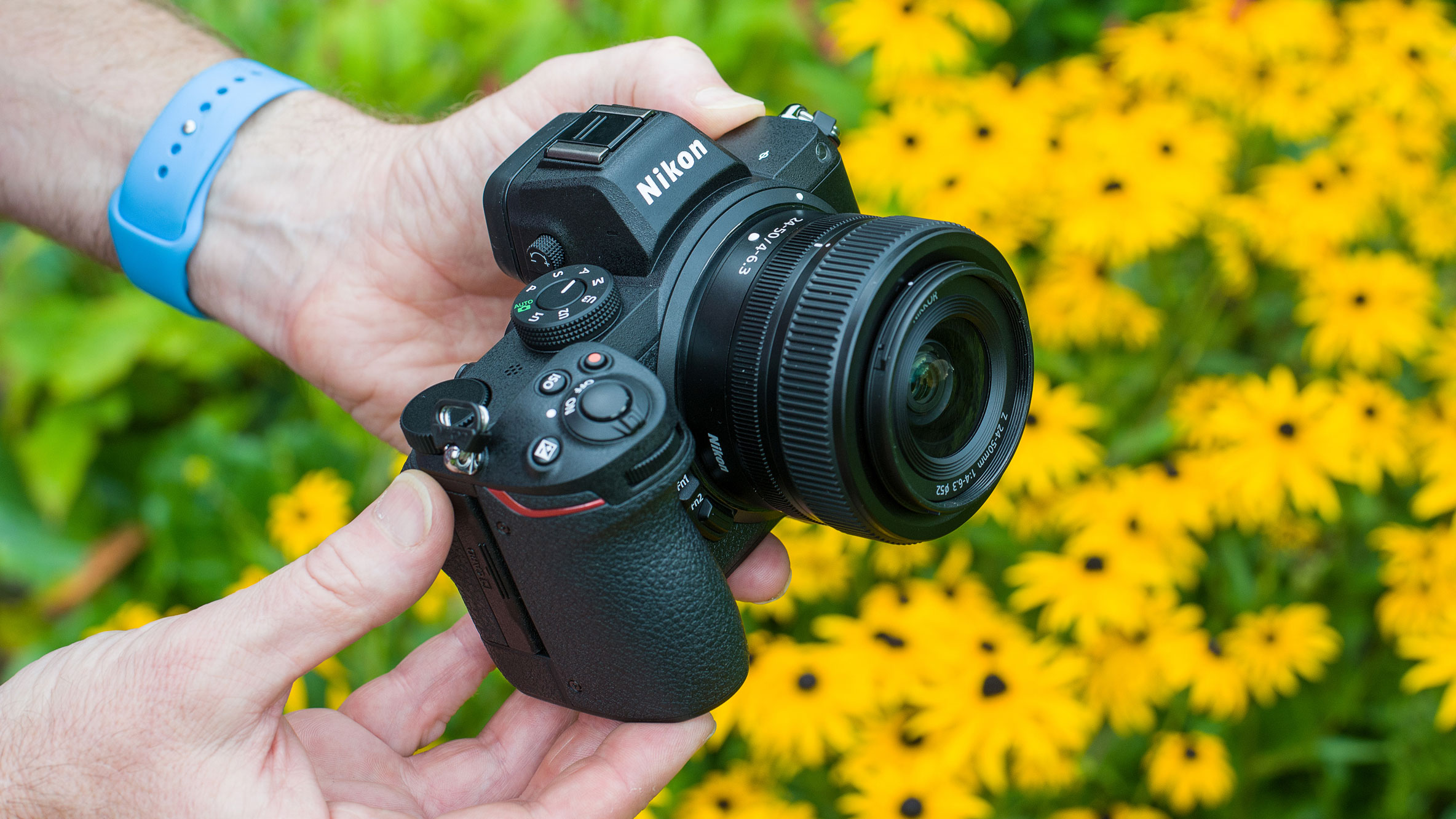
That 24-50mm kit lens
Every entry-level camera needs a kit lens, and the Z 24-50mm f/4-6.3 is the Z5’s. In fact, in some markets including the UK, the camera is available as a bundle with the lens, while in other territories, such as the USA, it can be bought body-only.
The lens is pretty compact, though not quite as compact as the pancake design of the Z 16-50mm that accompanies the APS-C sensor Z50. Like many other Nikon Z zooms, it features a retractable design and so the lens is a fair bit longer when in use than in the stowed position.
As our lab tests show, the lens proved to be very sharp through its albeit limited focal length range. Not quite as razor sharp as the S-line 24-70mm f/4 kit lens that accompanies the Z 6 and Z 7, but nevertheless very impressive for a kit lens that costs about half the price, while optical defects such as distortion and fringing are so minimal as to be a complete non-issue. The autofocus stepping motor locked silently and swiftly onto moving subjects, such as our skateboarders, enabling a high hit-rate of action shots.
However, that focal length range really isn’t very big at all, stretching barely over 2x. While the 24mm wide length is pretty much what you’d expect, topping out at 50mm quite literally comes up short when it comes to telephoto reach (the Z50’s Z 16-50mm has a 3.1x zoom range by way of comparison, with a 24-75mm effective focal length).
The aperture shrinks from f/4 at the wide end to f/6.3 when zoomed in – which is pretty slow, particularly considering the limited zoom range, and combined with this does limit shallow depth of field effects for portraits and the like.
All things considered, the Z 24-50mm f/4-6.3’s image quality is very good indeed for an entry level kit lens, but we think many photographers will outgrow its limited range pretty quickly.
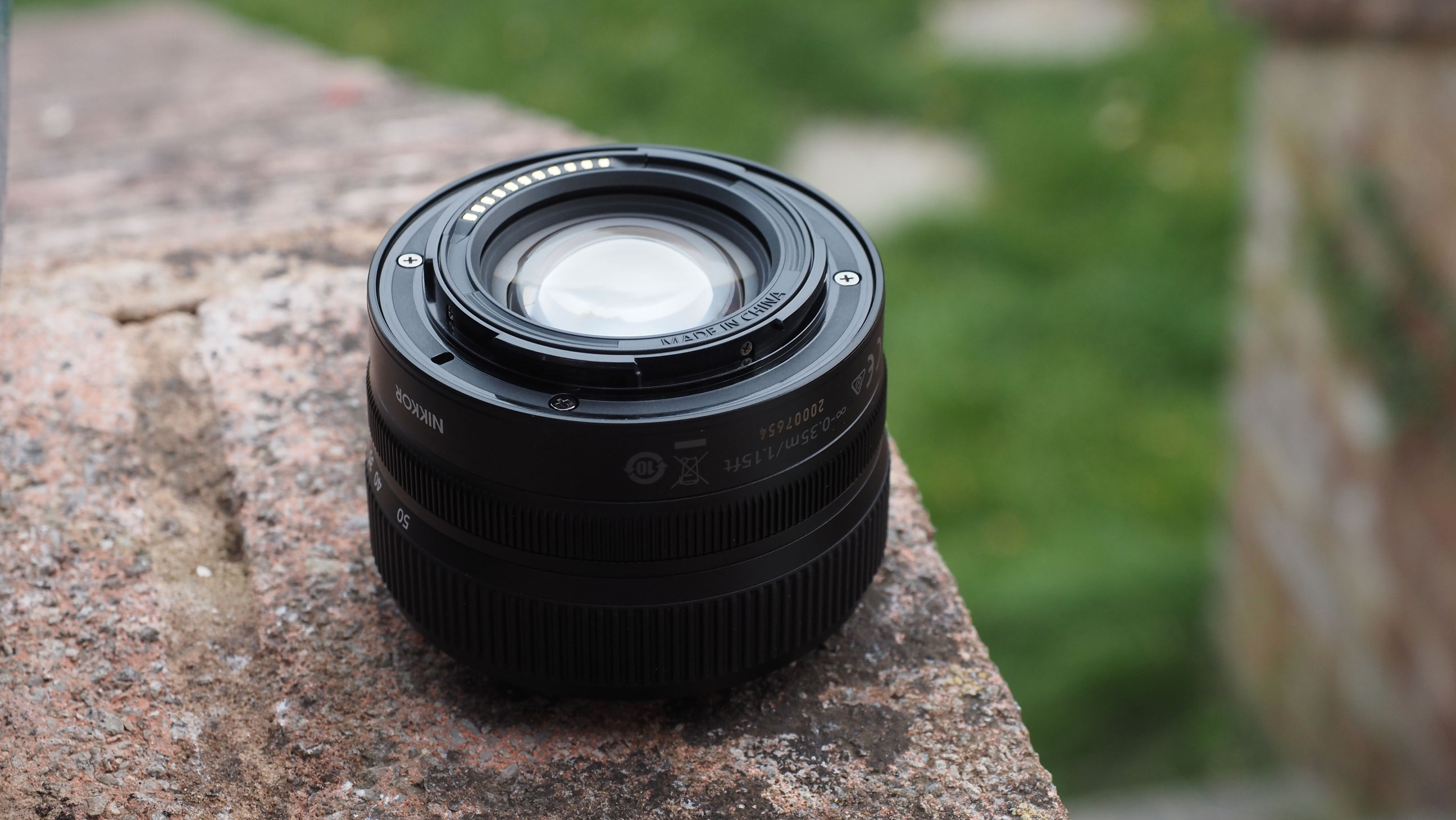
In addition to the zoom ring, there’s also a control ring, which is normally used for manual focusing but can be assigned other functions when autofocus is engaged, such as exposure compensation. And speaking of manual focus, one glaring omission is there’s no on-barrel switch to turn autofocus on and off. As there’s no manual AF/M switch on Z cameras either, this means delving into the menus to disable autofocus. There’s also no VR switch, as the lens relies on the in-body stabilization of the Z5 and does not have VR built in.
Nikon has made compromises in both the zoom range and maximum aperture to produce such a compact kit lens, and for many that will be a compromise too far. We much prefer the Z 24-70mm f/4 lens that’s the kit lens option for the Z6 and Z7. Not only does it address both those concerns, but being a ‘S-line’ lens, that lens’s image quality is simply stellar.
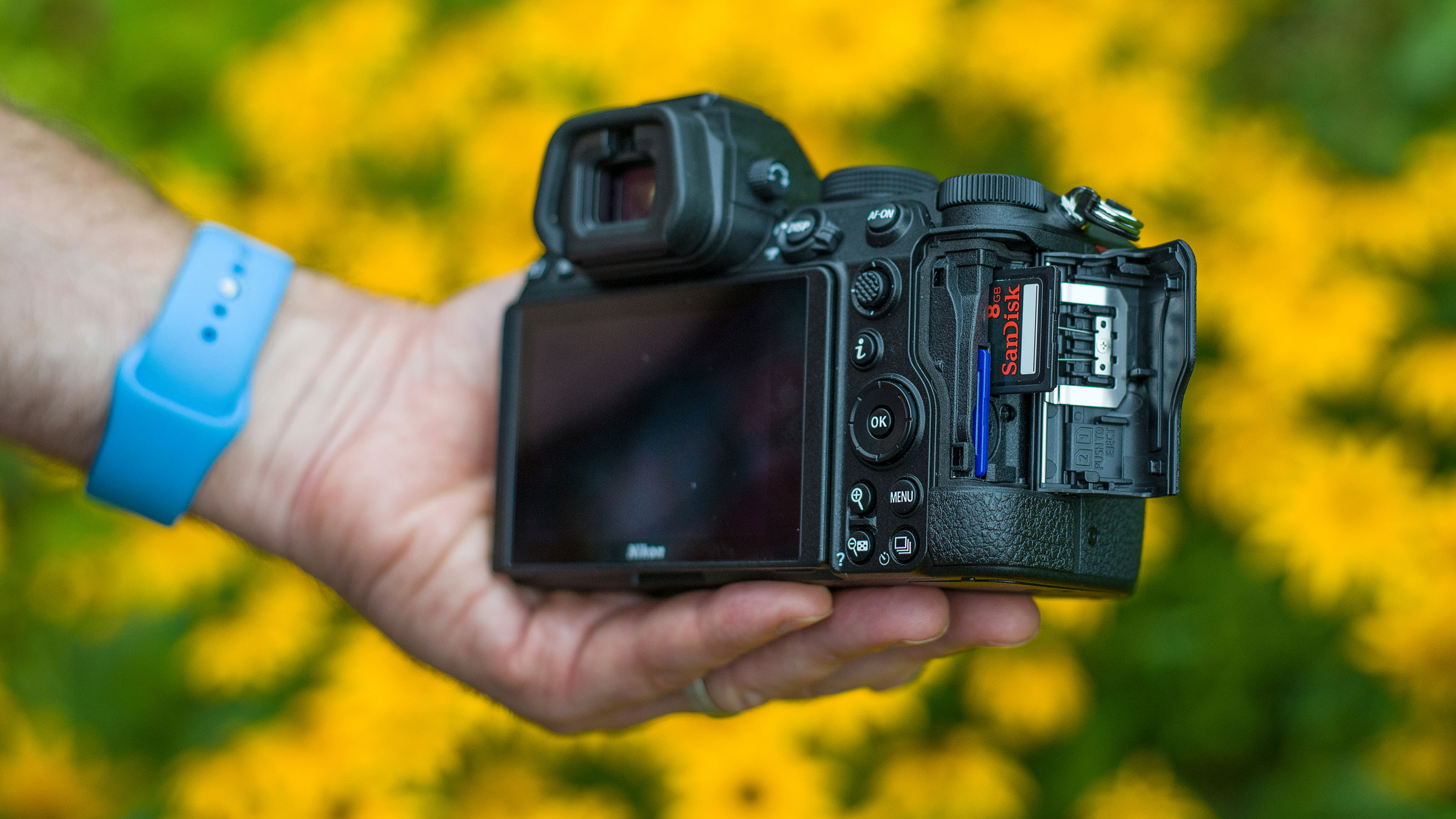
Build and handling
The camera uses the same stunning electronic viewfinder as the Z6 and Z7, with a 3.69 million dot display, for a crystal-clear, near-lag-free image that is as close as you can get to a ‘proper’ optical viewfinder. Thanks to the use of top-quality Nikon optics in the display, it’s still one of the the best EVFs around. Once you get used to it, you may well find you prefer it to an optical viewfinder. Not only are exposure settings applied to the image for something close to a ‘what you see is what you get’ display, enabling you to actually see the subjects you’re shooting in near darkness, for example, but a head-up display can cycle through an on-screen histogram and camera level indicator with a press of the handily positioned Disp button; you’ll have no excuses for taking an off-kilter shot ever again! In addition, you can playback images through the viewfinder too, making reviewing shots in bright sunlight no longer an issue.
The rear LCD, on the other hand, has only around half the resolution, at 1.04 million dots rather than the 2.1 million of the cameras higher up the range. While you can just about see the difference when viewing the displays side by side, in isolation most users won’t notice the lower pixel count – though it does take an additional button press of the zoom button to see image detail at 100%.
Like the Z6 and Z7, the screen tilts up and down for low and high-level shooting, though it doesn't flip all the way around for selfies, unlike the APC-S sensor Z50. You can also tap the screen to simultaneously focus and take the shot, which can be much quicker than using the thumbstick to get the focus point on the desired area.
The other differences are on the inside. First off, the maximum shooting rate is a relatively pedestrian 4.5 frames per second, as opposed to the Z6’s frankly insane machine gun-like 12fps. On the plus side, you can keep this shooting rate up until the memory card is full (as long as it’s a decently fast one), while the 6 can manage around three seconds of shooting before the buffer begins to clog up. The frame rate being so much slower surprised us, given that both cameras have an EXPEED 6 processor under the hood, but Nikon has told us this is down to the difference in image sensor design, and the slower speed at which information can be read from the Z5’s CMOS sensor.
Performance
We tested the Nikon Z5 directly alongside a Z6, and most regular shooting circumstances, you’d be hard-pressed to tell the difference between shots taken on either camera. We took the camera on a field trip around the city of Bath to put it and its kit lens through their paces. We took as near identical shots as we could manage of the same scene on a tripod with both the Z5 and Z6, with the same settings and swapping the 24-50mm kit lens between them, and layered the aligned images in Photoshop so we could easily flip from one to the other. Viewed at a 100% pixel-peeping level, the Z6 shots showed perhaps a touch more contrast and depth in the shadows, but there really was very little in it.
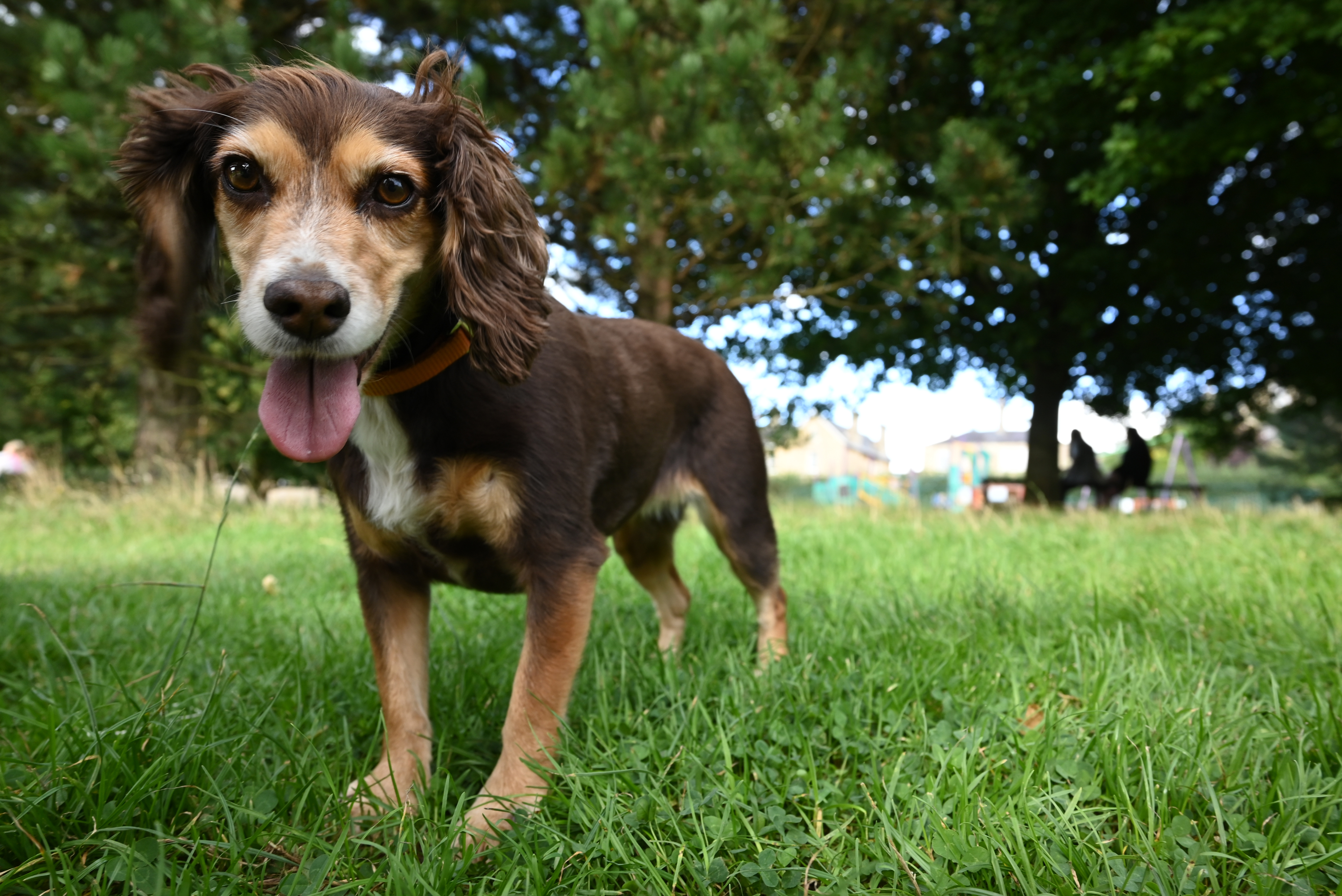
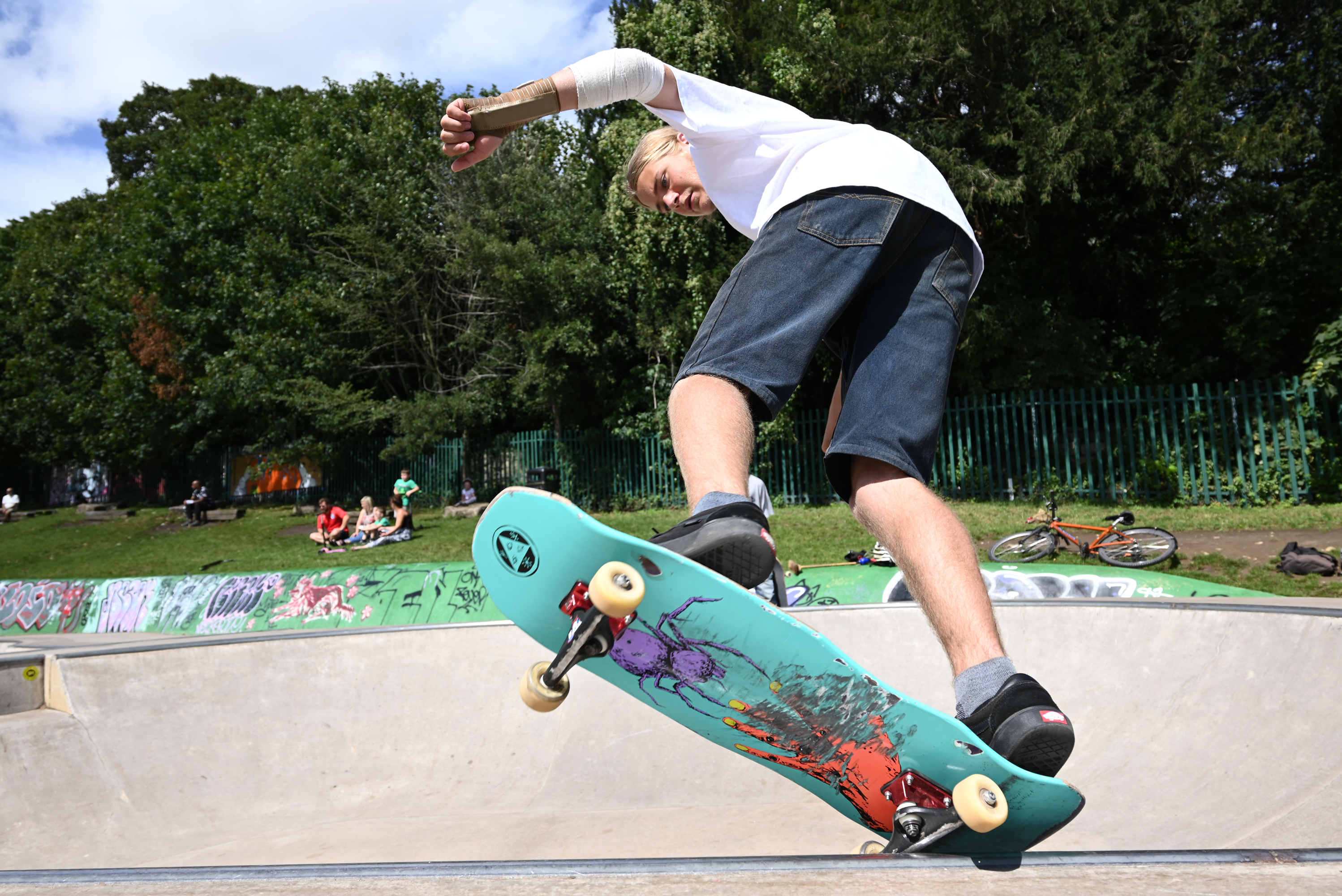

So while this is a new sensor, it still packs the same number of 273 inbuilt AF points. Autofocus appears to be just as responsive as in the system employed in the Z6, and with points covering 90 percent of the frame arranged in a 21x13 array, it covers a far bigger area than the dedicated autofocus modules built into Nikon’s DSLRs, which are clustered around the central portion of the frame. But while it’s zippy, it doesn’t quite match the speed and accuracy of autofocus that Nikon’s most advanced DSLR systems are capable of.
With so many AF points available, these are selected in a different way than DSLR users are used to. AF points can be individually selected in Single Point Mode, then Small and Large Wide Area modes that employ an increasingly larger number of AF points, while Auto-Area AF that uses all 273. On top of that, you get a Pin-AF mode with AF-S (Single Autofocus shooting), that enables you to select between the on-sensor points but takes longer to achieve focus, and Dynamic-Area AF mode when using AF-C (Continuous Autofocus) that strays beyond the selected point should your subject briefly move from it.

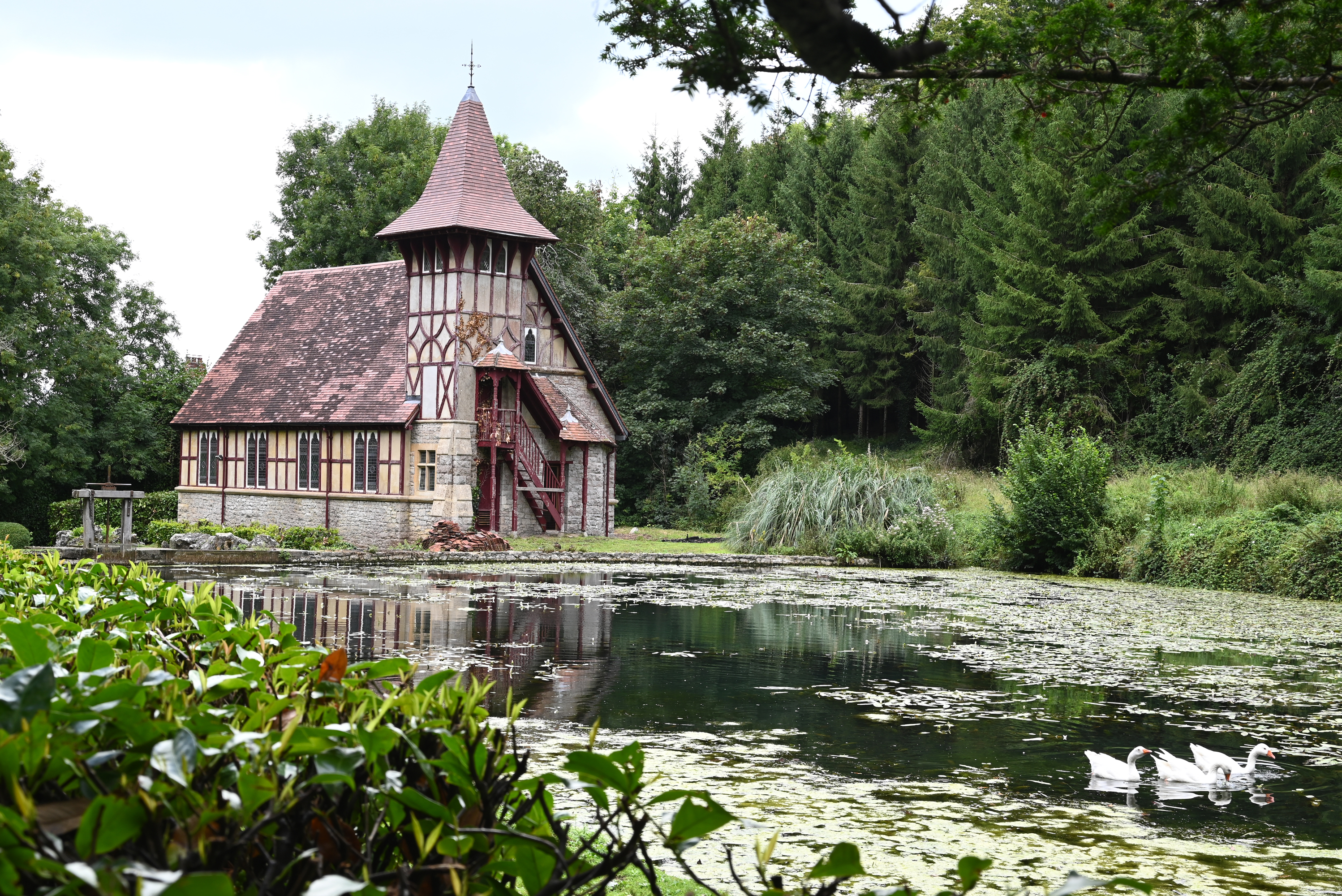
Auto Area AF can be further refined to prioritize human faces, or their eyes, or whatever’s closest to the camera, and it worked a treat in the skate park, keeping boarders sharp as we shot with continuous AF as they moved around the skate bowl. An addition to this mode is the ability to focus on animal faces/eyes, such as cats and dogs – it’s the first Nikon to come with this feature out of the box, though other mirrorless cameras can update to this via a firmware upgrade.
We did find this worked far better on stationary animals than those moving at speed, where it struggled to keep up with the action. Here, you’re better sticking to Dynamic or Small Area AF modes, and keeping the selected focus points on your target.

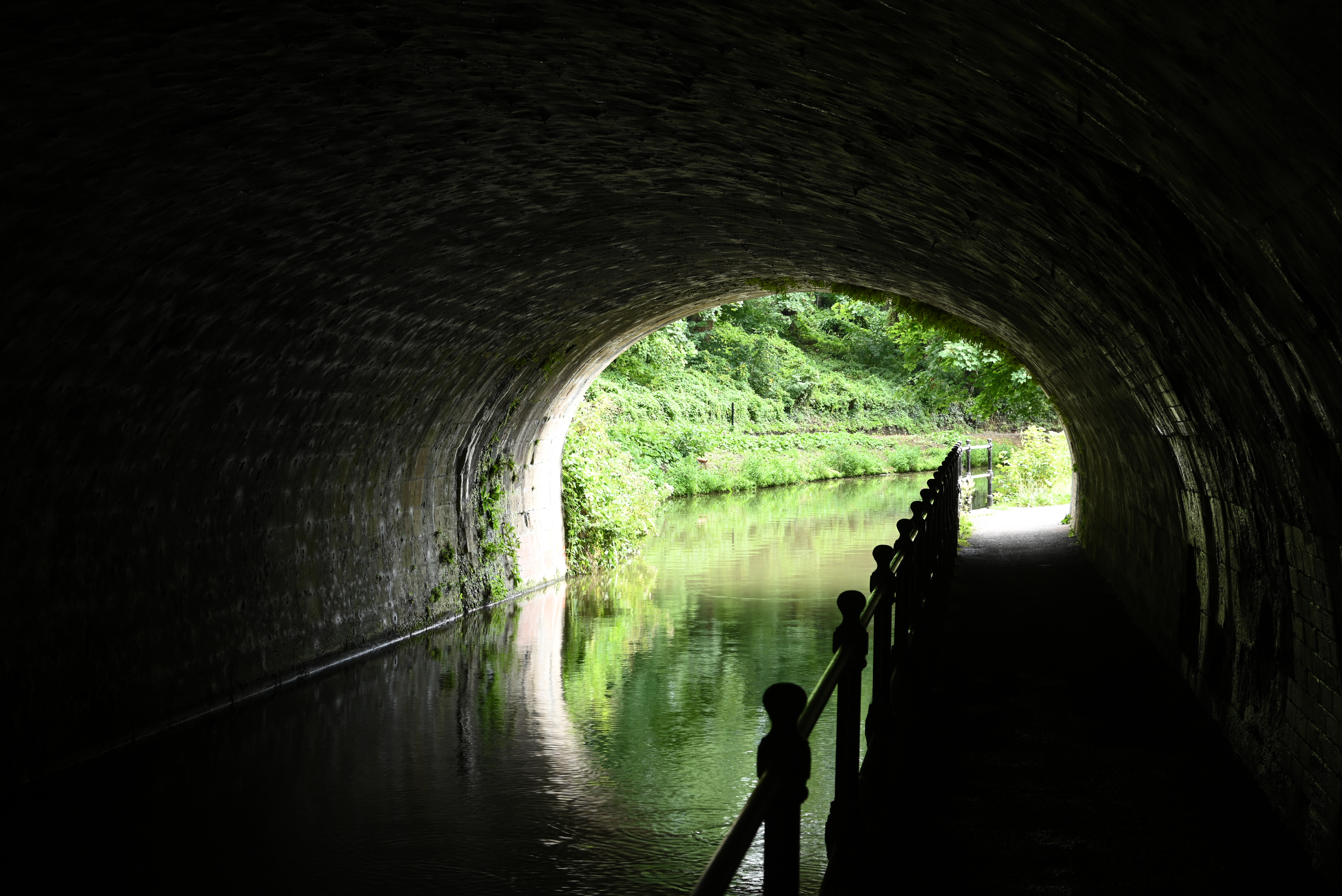
Video
While the Z5 can shoot 4K video at 30fps, it is cropped by a factor of 1.7x, rather than using the full sensor width like the Z6. This means that shooting at the wide end of the 24-50mm kit lens would give an effective focal length of 41mm, so not really wide angle at all. On the other hand, the standard 50mm end becomes a moderate-telephoto 85mm. In short, it’s perfectly capable at shooting video, but your lenses don’t behave in the way you might expect. We also tried the video function shooting our skateboards, panning as we followed the action. The camera AF had no trouble keeping up, and the inbuilt stabilization dampened the camera movement so it was beautifully smooth on playback.
Shooting in Full HD tops out at 60fps, while the Z6 can manage 120fps. Again, event though processing engine in the Z5 is identical to the one in the Z6, the severe crop and slower Full HD frame rate is down to the design of the Z5's CMOS sensor,
One video benefit the Z 5 does have is that the camera can be powered by USB-C, rather than just charged by it – very useful for power-hungry movie shooting, or situations such as time-lapse photography, where your battery running out mid-shoot could be disastrous. That said, the battery life is rated at 470 shots – a very decent 25% improvement over the Z6’s 380 shots.
Lab tests
We ran our regular set of lab tests on the Nikon Z5 and compared the results with those of three chief rivals: the Canon EOS RP, Sony A7 III and Panasonic Lumix S1.
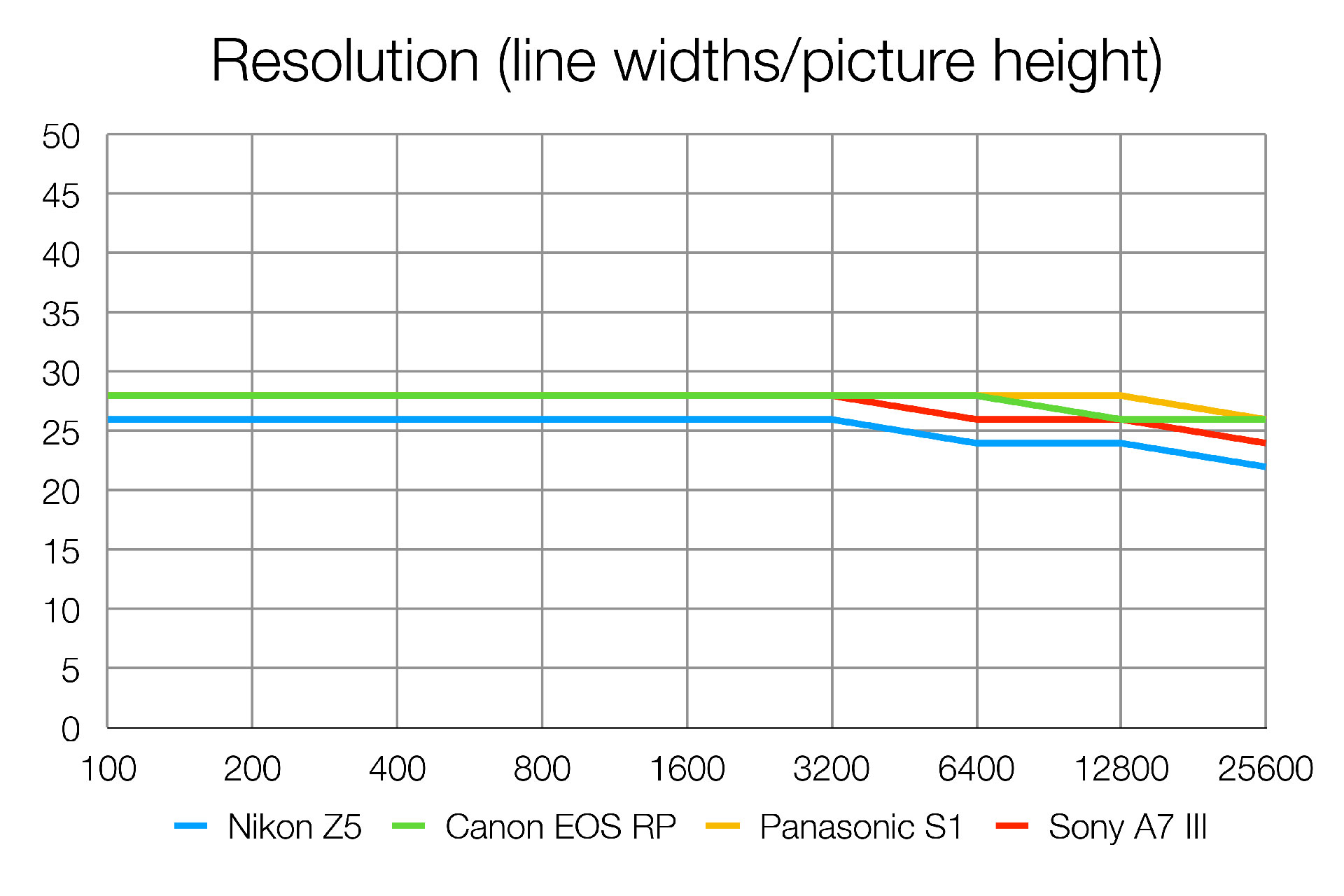
Resolution
The resolution of the Z5 proved slightly lower than that of its rivals, but by a small difference that won't really be apparent in real-world shooting. We suspect the retracting 25-50mm kit lens might have something to do with this, as its rivals tend to come with a slightly higher grade of kit lens.
Resolution is measured in line widths/picture height, a standardised resolution measurement that's independent of sensor size.
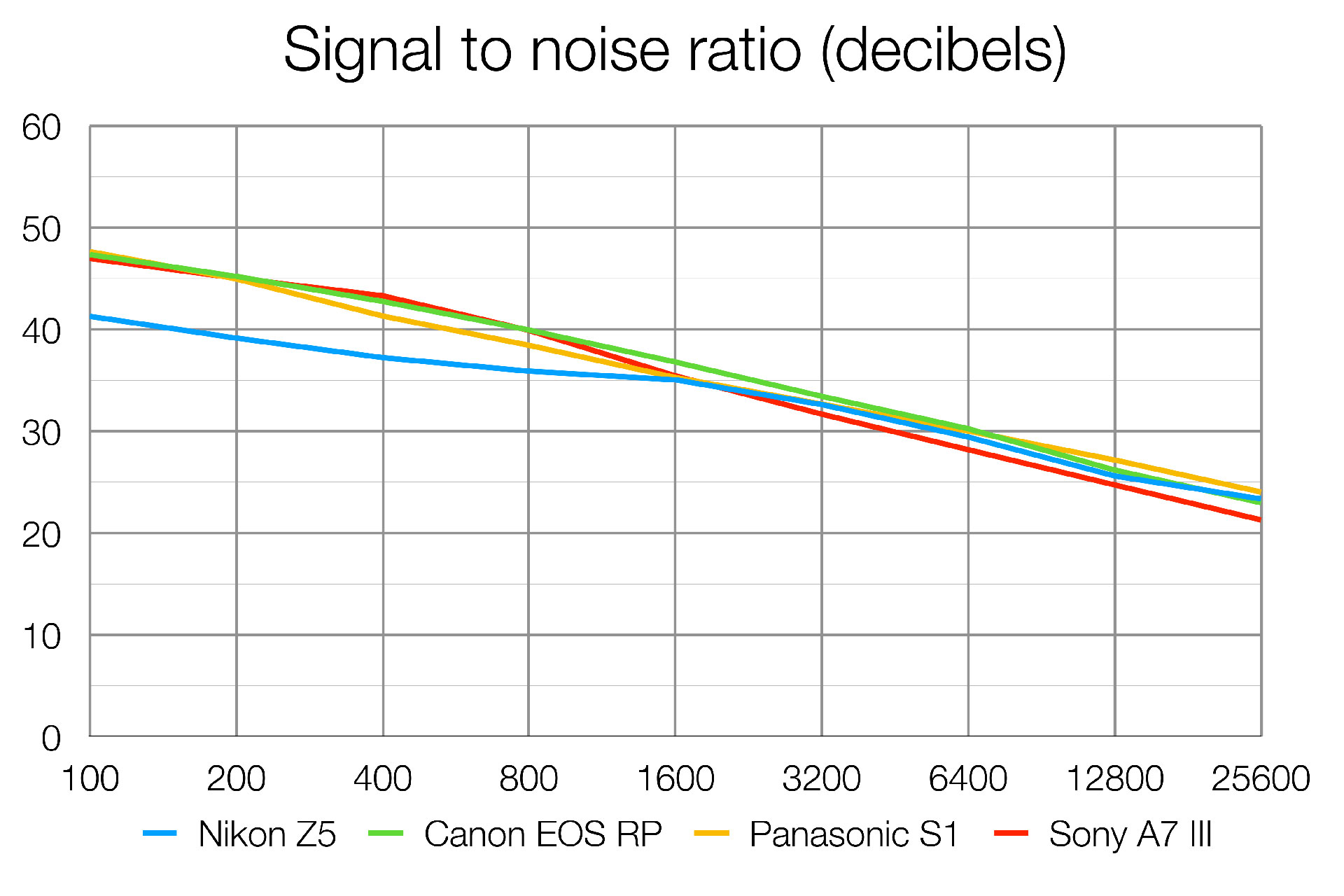
Signal to noise ratio
The Z5's signal to noise ratio proved worse than the rival cameras we selected at low ISO settings, where noise tends to be less apparent anyway, but about the same at high ISO settings.
The signal to noise ratio is quoted in decibels, and its the difference between actual image detail and random background noise. The higher the number, the better.
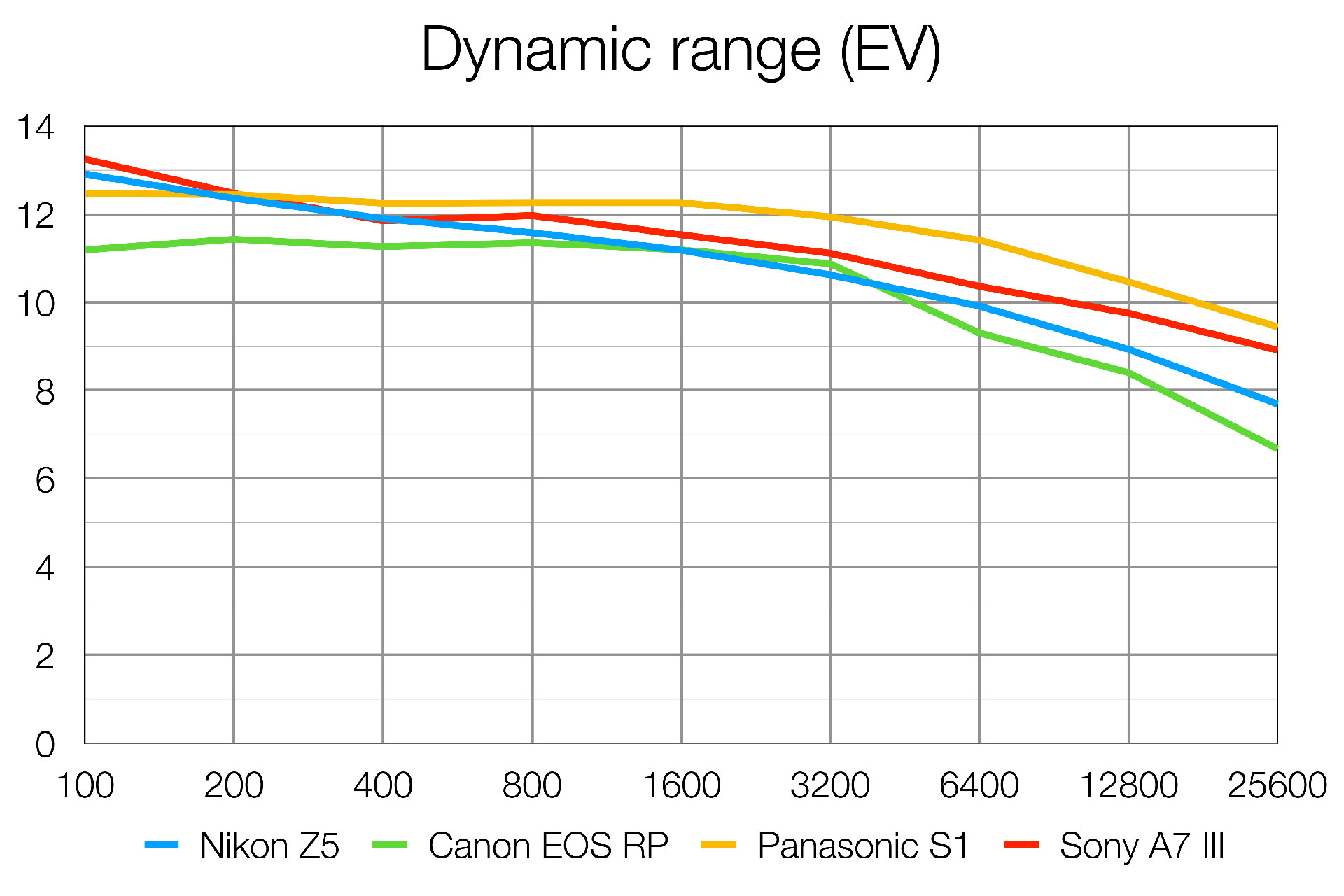
Dynamic range
The Z5's dynamic range is good at low to medium ISO settings but does drop away from the Sony A7 III and Panasonic S1 at higher ISOs. It does comfortably beat the much cheaper Canon EOS RP across the ISO range, though.
Dynamic range is a measure of the camera's ability to hold detail in the brightest and darkest parts of the picture. It's measured in EV (exposure values, or 'stops'), and the higher the number, the better.
Verdict
With the Nikon Z5 having so much in common with the Nikon Z6, the next model up in the range, the other key differential – and an essential one for a camera targeted as an ‘entry level’ model – is price. In the UK, the Z 5 is only available with the 24-50mm kit lens, which might not be everyone's choice, though it is available in the US in a body-only version. Of course, camera prices tumble over time, and at the time of writing, the Nikon Z6 can be picked up for just $300-400 more, depending on configuration. And this is the Z5’s biggest problem; for our money, after weighing up the options we’d splash out the extra on the superior camera – and with the far superior 24-70mm f/4 kit lens.
That’s not the full story of course. Those upgrading to mirrorless from their DSLRs are likely to have a ready stash of SD cards, while even the cheapest XQD or CFexpress memory card will add plenty to the initial investment.
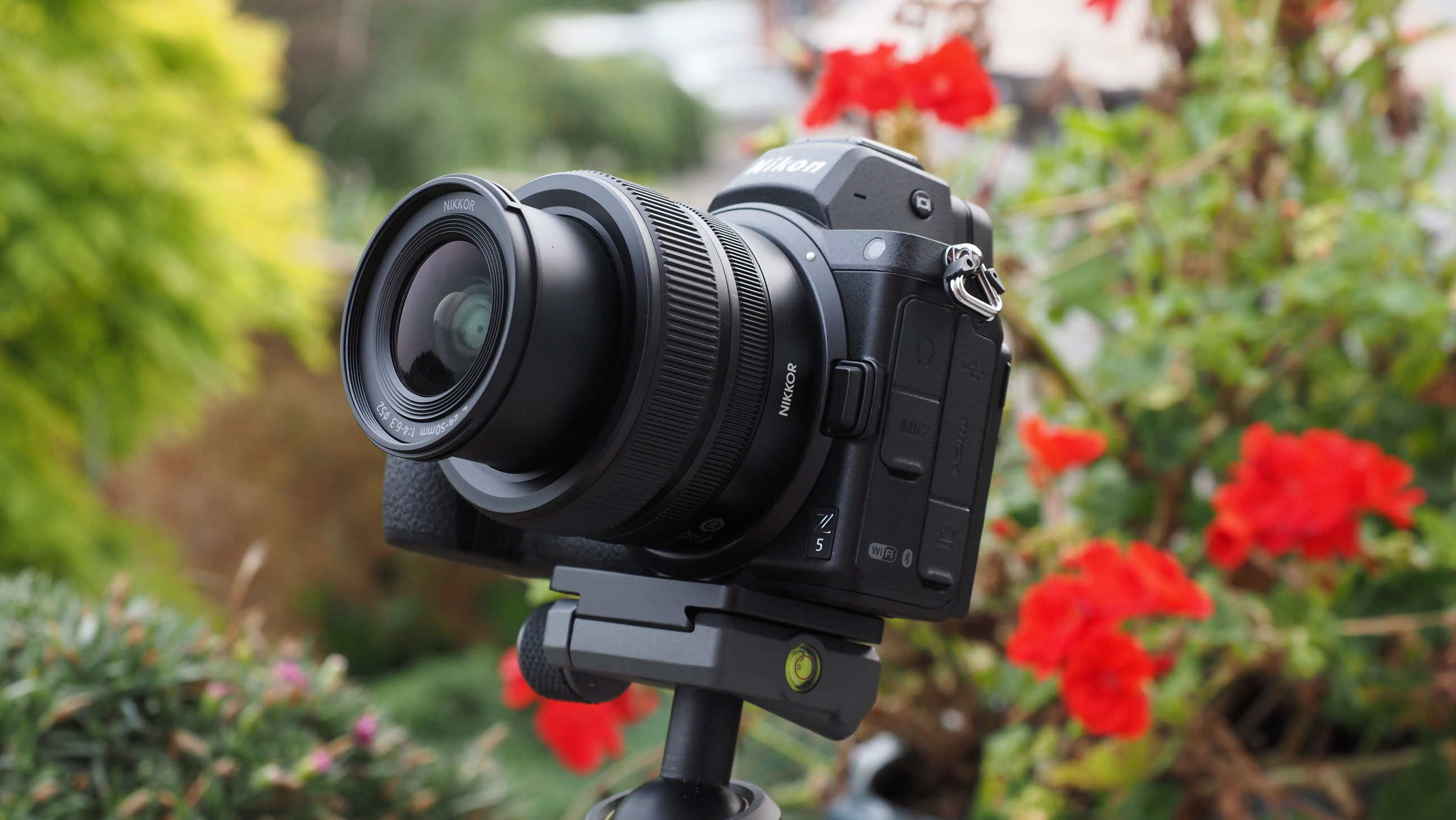
For most of us, the Z5 offers the key features of the Z6 at a lower price tag. With the same (near-as-dammit) resolution, the same top weather-sealed build quality, and most of the same desirable high-end features. And what it loses out on, most of us really won’t be /that/ bothered about: the missing top-plate LCD only duplicates info available in the viewfinder or on the rear display anyway; the CMOS sensor is still capable of stunning 24.3Mp stills and matches the native ISO51,200 of the Z6’s BSI component; if you’re not an avid sports shooter, 4.5fps is plenty; and if you’re not a videographer, who cares about the 1.7x crop? And if SD cards are less reliable, stick in two of them…
The real question is whether its lower price is low enough. The Z5 will, of course, fall in price over time itself, but in the meantime, it’s relatively high launch price may just persuade some potential purchasers that it’s worth forking out the relatively little extra for the Z6.
Compared to other brands, the Z5 is neither cheap nor expensive. The Canon EOS RP is much cheaper to buy, but lacks the Z5's 4K video, while the Sony A7 III and Panasonic S1 are somewhat more advanced cameras and not exactly direct rivals. The Z5 is competent, attractive and affordable, but its price pitches it against a host of cameras which can boast exactly the same thing.
Read more:
• Best mirrorless cameras
• Cheapest full frame cameras
• Best Nikon cameras
• Best Nikon Z lenses
• Nikon Z5 vs Z6
• Nikon Z50 review

Rod is an independent photography journalist and editor, and a long-standing Digital Camera World contributor, having previously worked as DCW's Group Reviews editor. Before that he has been technique editor on N-Photo, Head of Testing for the photography division and Camera Channel editor on TechRadar, as well as contributing to many other publications. He has been writing about photography technique, photo editing and digital cameras since they first appeared, and before that began his career writing about film photography. He has used and reviewed practically every interchangeable lens camera launched in the past 20 years, from entry-level DSLRs to medium format cameras, together with lenses, tripods, gimbals, light meters, camera bags and more. Rod has his own camera gear blog at fotovolo.com but also writes about photo-editing applications and techniques at lifeafterphotoshop.com
